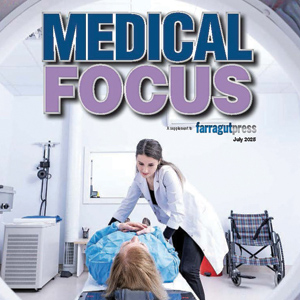Bibles to brains
FBC Old Concord home to be part of brain research center
The bricks are loose in the dirt in front of the old Hobbs’ general store in Historic Concord. And that’s just the way the brain research company likes it.
In the tiny village on the National Register of Historic Places, homes boast dates from the 1800s. Things are silent in the village where tourists never stop. But once upon a time, it was the center of local marble mining, complete with nearby quarries and a train depot. Now the buildings along the main street look like antiques set on a shelf. But looks can be deceiving.
The train rolls quietly along Front Street, now Lake Ridge Drive, tooting only at the occasional onlooker. It passes the general store, the post office, an art gallery and Crichton Memorial Baptist Church.
The stillness of the village is in odd contrast to the activity that buzzes inside Hobb’s and at brightly lit modern workstations in the former Post Office. To say cutting-edge technology is taking place at NeuroScience Associates would be an understatement. In contrast to the town that looks over its shoulder to the past, founder Robert C. Switzer III is looking forward for new discoveries in “the last frontier.”
“Brain research is increasing,” he said. “The brain is the last frontier in a lot of people’s minds.”
The demand by researchers for brain specimen staining and analysis is so great that Switzer and his staff of 25 are expanding down the road to Crichton Memorial Baptist Church. Decades ago, 250 congregants moved to a new building on Kingston Pike and the church was renamed “First Baptist Concord.” NSA has owned the church for the last several years and now construction is underway inside. Equipment and dumpsters are parked out front as workers repair and remodel, with the initial goal of providing office space in the old educational wing of the church.
Switzer grew up in the Northeast and developed a fascination for astronomy before he fell in love with the brain. He made his own telescope in the seventh or eighth grade, even grinding his own mirror. He earned a doctorate in biophysics from Michigan State University and has patented his silver-staining method for Alzheimer’s disease pathology. He also has trademarked the names “MultiBrain” and “MultiCord.”
“MultiBrain” refers to the method Switzer developed that has brought mass production to Front Street. By embedding brains in a gelatin matrix and then freezing it, multiple specimens can be sliced through at the same time. The specimens are stained in different ways to highlight the architecture of the cells and are stained simultaneously to provide uniformity.
“The cells are jammed-packed,” Switzer said, “so you need a thin slice to tell the forest from the trees and see individual elements.”
The specimens are then mounted on microscope slides so the impact of disease or trauma on the brain can be seen. NSA will provide analysis or researchers can have the specimens sent back for their own analysis.
Switzer says this proprietary technology is not available anywhere else in the world and that his technique speeds up the research process dramatically.
“It’s the speed and quality,” he said. “Because we brought mass production to this, we can reduce the cycle time to one-third of normal lab time.”
On the NSA website, scientists can select the “request a quote” page where they’re asked which type of brain they’ll be working with: mouse, rat, human, Marmoset monkey, Rhesus monkey, African Green monkey, guinea pig, dog, pig, sheep or “other.” Customer requests come from around the world and usually involve research on Alzheimer’s, Switzer said, adding “No live animals are kept here.”
On the ground floor of Hobbs’ he glances around the warm, almost lodge-like interior, and with staff members busy all around him, he talks in low tones.
“It was really austere when we got it in 1989,” he says. “We added an atrium, skylights and reconstructed the roof.” He nods toward the turning staircase (planted near the former soda fountain) that leads to the second floor and looks with pride at the tread at his feet. “We used wood from the rafters to make the stairs,” he said.
The building ceased being a general store in the late ‘50s, Switzer said, and later served as a sailing supply store, consignment store and cable TV repair store. NSA has been in the building since 1989 and opened a lab there in 1992.
“Eventually we moved into the Post Office building in about 2005 or 2006,” he said. “We were busting at the seams. We gutted it and designed it according to our needs.”
Switzer, a Farragut resident, his wife, Julie, and three grown children run the business and take pleasure in working in a historic setting that charms visitors to NSA.
“We love history,” said the 70-something scientist. “We wanted to make it ‘Ye Olde Laboratory,’ not ‘The Sterile Laboratory.’
“We were starting to bust at the seams in the post office when he made an offer to the owners of the church building,” he said. “Having something in a distant location was just anathema in my mind, so we jumped at the chance.”
As his company remodels the church built in the 1920s, a construction worker on the site, Frankie Steele, says Switzer is determined to preserve as much of the history of the church as possible, including remaking and protecting the stained-glass windows that local kids have destroyed with rocks, and maintaining the arched pitch of the ceiling of the small sanctuary upstairs.
Steele says he has known Switzer for nearly 20 years.
“My two sons and my wife work for him,” he said. “He’s a good man.”
Lifelong resident Carol Able Russell, who shopped in both Hobb’s and Benson’s general stores in her youth, echoes his sentiments.
“They’ve contributed a lot to Concord,” she said. “We’re glad to have them here.”


